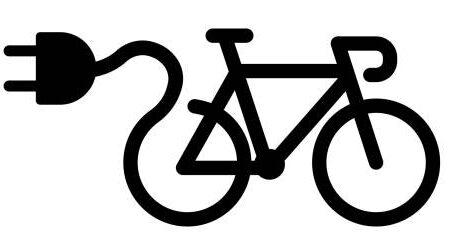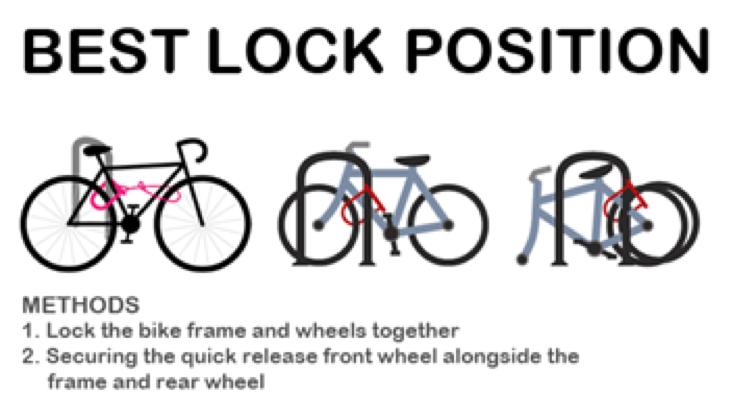Understanding Bike Theft and its Prevention
Bicycle theft is a significant problem, causing considerable financial and emotional distress for owners. The impact extends beyond the monetary loss; it involves the loss of a valued possession and a mode of transportation. One way to secure a bike is through a layered security approach. This involves combining multiple security methods for optimal protection. This strategy significantly reduces the risk of theft compared to relying on a single security measure. Understanding the various types of locks available is crucial. U-locks offer robust security, while cable locks provide flexibility but less strength. Chain locks fall somewhere between the two, offering a balance of security and portability. Choosing the right lock type and using it correctly is a key element of effective bike security. One way to secure a bike effectively begins with understanding these different lock types and their strengths and weaknesses. Each offers a different level of protection, and the choice depends on individual needs and circumstances. The best approach is often to combine different types of locks for enhanced security. For example, a U-lock secures the frame, while a cable lock protects the wheels. This layered approach makes it much harder for a thief to steal the bike.
Layered security goes beyond just the lock itself. It involves considering the location where you park your bike. Parking in well-lit, highly trafficked areas significantly reduces the risk of theft. Many thieves prefer to operate in poorly lit, secluded areas where they are less likely to be seen or interrupted. One way to secure a bike is to choose a secure parking spot. This is especially critical in areas known for high rates of bicycle theft. Proper locking techniques are equally important. A strong lock improperly used is far less effective than a less-strong lock used correctly. This involves securing the bike frame and at least one wheel to an immovable object. Even with the most secure lock, a thief can still steal a bike if it is not properly secured. Remember that prevention is far easier and less costly than dealing with the aftermath of theft.
The effectiveness of any security method hinges on understanding the context. A simple cable lock might suffice in a low-risk area, while a high-risk environment necessitates a more robust, multi-layered approach. One way to secure a bike in high-risk areas is with multiple locks. This often involves a combination of U-locks and cable locks, used to secure different parts of the bicycle. Another layer of security can be a registered bike, easily identifiable if stolen. Investing time in understanding how to maximize the effectiveness of your chosen security measures is a key element in preventing bike theft. Regularly reviewing and improving your security strategy will enhance your chances of keeping your bike safe. This proactive approach is far better than reacting to theft after it happens. One way to secure a bike is to learn about these various methods and employ them appropriately. Understanding the risks and mitigating them effectively through layered security significantly increases the chances of preventing bicycle theft.
How to Secure Your Bike Using High-Quality Locks: A Comprehensive Guide
One way to secure a bike effectively involves using high-quality locks. U-locks, renowned for their strength and resistance to cutting and sawing, are a popular choice. To maximize security, always lock the frame and one wheel to a fixed object. Choose a sturdy, immovable object like a bike rack or a strong pole. Avoid flimsy fences or thin railings. Selecting the right size U-lock is crucial. It should be large enough to fit both the frame and wheel, but not so large that it becomes cumbersome to use or compromises the security of the lock mechanism. Reputable brands such as Kryptonite and Abus offer a range of U-locks with varying levels of security ratings; higher ratings indicate greater resistance to attack.
Beyond U-locks, consider additional security measures. Cable locks, while less robust than U-locks, offer flexibility. They are ideal for securing accessories like a helmet or additional wheels. Chain locks, known for their durability and flexibility in securing to different objects, also play a vital role in a layered security approach. One way to secure a bike in high-risk areas is by combining a U-lock for the frame and wheel with a cable lock for the saddle and other accessories. Remember, the goal is to create multiple points of failure for a thief, thus making it significantly more difficult to steal the bike. The proper use of locks, in conjunction with other security measures, is paramount. Always ensure that the lock is properly engaged and that the bike cannot easily be lifted or maneuvered despite the lock.
When choosing a lock, always check independent security ratings. These ratings often reflect real-world testing and provide an objective measure of a lock’s resistance to various attack methods. Remember that even the most secure lock is vulnerable if improperly used. Therefore, selecting a lock that fits the bike and the securing point snugly is essential. One way to secure a bike is to consider the environment. A longer, heavier chain lock might be suitable for securing a bike to a robust object outdoors, while a compact U-lock might be preferred for indoor or more constrained environments. Regularly inspect your locks for any signs of wear and tear. Replace any damaged or compromised locks immediately to maintain the highest level of security for your bicycle.
Securing Your Bike in High-Risk Areas
Securing a bicycle in high-theft areas requires a more proactive approach than in safer neighborhoods. One way to secure a bike in these locations is to employ multiple layers of security. This often involves using more than one type of lock. For instance, combining a sturdy U-lock to secure the frame and wheel to a fixed object, like a bike rack, with a cable lock to protect additional components, such as the seat or front wheel, offers significantly enhanced protection. Always choose a well-lit, highly visible area with considerable foot traffic. One way to secure a bike is to ensure it remains in plain sight, deterring potential thieves. The increased visibility provided by well-lit areas and public spaces acts as a significant deterrent. Consider the proximity to security cameras or buildings with security personnel. The presence of security features creates a higher risk for criminals and discourages theft.
In high-risk environments, selecting the right lock is crucial. A high-quality U-lock from a reputable manufacturer provides superior resistance to cutting and picking compared to cable or chain locks. However, even the most secure lock is vulnerable if improperly used. Always ensure the U-lock shackle is completely inserted through the frame and wheel, and locked securely. Choose a securing point that is robust and immovable, such as a sturdy pole or a fixed bike rack. Avoid flimsy objects or loosely attached structures that can easily be manipulated by thieves. Remember, one way to secure a bike effectively involves choosing the right lock and using it correctly. Always consider the specific vulnerabilities of your bike’s design and adjust your locking strategy accordingly. A thief might target smaller, more easily removed components, so securing these elements with a cable lock is an additional valuable layer of security.
Situational awareness is paramount in high-risk areas. Before locking your bike, take a moment to observe the surroundings. Look for signs of suspicious activity. Note the location of security cameras and potential escape routes for thieves. Keeping an eye on your bike even after it is secured can serve as a visual deterrent. Consider using a visible, high-quality lock as a deterrent, even in places where there might be fewer visible security measures. One way to secure a bike and potentially deter theft is to make the bike itself less of a target. Regular maintenance and ensuring the bike appears well-maintained signals that the owner values the bicycle and takes precautions against theft.
Utilizing Bike Registration and Tracking Devices
Registering your bicycle with local law enforcement or a national registry provides a crucial layer of security. This process creates a record of your bike’s identification, aiding in its recovery in case of theft. These registries often work with law enforcement to identify and return stolen bicycles. It’s one way to secure a bike effectively. Furthermore, these records significantly enhance the chances of recovering your bike.
GPS trackers and other anti-theft devices offer another level of protection. These devices, which can be attached to the frame or handlebars, use GPS technology to monitor a bicycle’s location. In the event of theft, the real-time location of your bicycle can assist law enforcement in recovering it quickly. Some trackers come with smartphone apps, enabling owners to monitor the bike’s location remotely. However, some trackers might have drawbacks, such as battery life or potential vulnerabilities to hacking or interference. Each device has its own strengths and weaknesses, so careful consideration is essential before making a purchase. Various anti-theft devices cater to different needs and budgets. Consider your priorities when selecting one way to secure a bike.
Beyond GPS, some bikes come equipped with built-in alarms that activate upon movement. These alarms deter potential thieves and can alert you to unauthorized activity. Investigate options that offer the best possible security. Various features and functions of different devices make each choice important in enhancing bike security and offering you one way to secure a bike. Evaluating the pros and cons based on your specific needs and budget will lead to an informed decision.
Smart Parking Strategies: Choosing the Right Location
Selecting a secure parking spot is crucial for preventing bicycle theft. Consider visibility when choosing a location. A high-traffic area with good visibility is one way to secure a bike. Position the bicycle where it is easily visible to passersby and security cameras. Proximity to these security measures can significantly deter potential thieves. Public areas with consistent foot traffic offer a greater degree of security.
Evaluate the likelihood of foot traffic and activity in the area. High foot traffic creates a greater deterrent. Avoid secluded or poorly lit areas. Secluded areas are less visible and offer fewer opportunities for deterrents, making them prime targets. Parking in poorly lit areas makes it harder to spot potential threats. Avoid leaving a bike unattended for extended periods in such locations. A visible and monitored location provides better protection. Choose a bike rack if available, and secure the bicycle firmly, using appropriate locks. This is one way to secure a bike.
Think about the security features of the parking area itself. Look for bike racks, walls, or other structures that can help protect the bicycle from theft. Consider the presence of security personnel or cameras in the vicinity. Good security measures in the immediate area can enhance the security of the bicycle. Assess the location based on its security measures for improved safety. When parking, prioritize well-lit areas with a significant volume of pedestrian or vehicle traffic. This approach significantly improves the bicycle’s security.
Investing in Bike Insurance for Added Protection
One way to secure a bike is through bicycle insurance, acting as a financial safety net in the event of theft or damage. This coverage can help offset the cost of replacement or repairs, lessening the financial burden on owners. Various types of bicycle insurance are available, each with different coverage options and premiums. Consider factors like the value of the bicycle and the extent of coverage desired when selecting a policy.
Comprehensive policies often provide protection against theft, vandalism, and accidental damage. Factors such as the bicycle’s make, model, and value typically influence premium costs. Understanding the specific terms and conditions of each policy is crucial. Thoroughly review the fine print to grasp the limitations and exclusions for optimal protection. A clear understanding of the policy’s scope will ensure the insurance effectively safeguards against unforeseen circumstances.
Evaluating coverage options tailored to individual needs is essential. Consider the geographical location, as some areas might have higher risk levels for bicycle theft. Insurance policies may also offer additional benefits, such as roadside assistance or rental bike coverage. Thorough research and comparison shopping among various insurance providers will help find a suitable policy that aligns with specific needs and budget constraints.
Community Initiatives and Neighborhood Watch Programs
Community engagement plays a vital role in enhancing bicycle security. Joining a local bicycle club fosters a sense of shared responsibility and encourages members to watch out for one another’s bikes. This collective vigilance creates a deterrent effect, discouraging potential thieves. Participating in neighborhood watch programs is another effective way to secure a bike. These programs encourage residents to report suspicious activity, fostering a sense of shared responsibility and deterring theft. Neighborhood watch initiatives can significantly enhance bike safety in a particular area by keeping an eye out for potential crimes.
Local bike clubs often organize patrols or group rides, which automatically increase visibility and deter potential theft. This shared vigilance creates a more secure environment for all cyclists. One way to secure a bike is by establishing a neighborhood watch system, where neighbors report suspicious activity and help keep a watchful eye on bicycles parked in public places. Community involvement can lead to increased police presence in areas with high bicycle theft rates, making them less appealing for potential criminals. Strong community ties are crucial for bicycle security. This means creating an environment where individuals feel safe enough to report and take action on potential problems.
Furthermore, participating in local initiatives like community bike maintenance workshops can equip residents with the knowledge and skills to keep their bicycles in good condition. This not only ensures a functioning bike but also minimizes the appeal to theft, thereby effectively securing a bike. Well-maintained bicycles are less of a target for theft, further reinforcing the importance of community engagement in bicycle security. Promoting bike safety through local programs and workshops is essential in preventing theft. These events can teach participants how to secure their bikes and how to identify potential threats in the area.
Maintaining Your Bike and Deterrent Measures
Regular bike maintenance acts as a powerful deterrent. A well-maintained bicycle is less appealing to thieves. Addressing minor repairs promptly, keeping it clean, and ensuring all parts are functioning correctly reduces its attractiveness as a target. One way to secure a bike is through preventative maintenance. This simple act of care significantly reduces the likelihood of theft. Consider this a crucial element of a comprehensive security strategy. A well-maintained bicycle also suggests responsible ownership, possibly deterring opportunistic thieves. Furthermore, a visually appealing bike can be a source of pride for the owner, motivating them to secure it properly. Always ensure the bike is locked securely when not in use; this is one way to secure a bike. Leaving it unlocked, even for a short period, presents an easy opportunity for theft.
Visible security measures serve as a strong deterrent. A high-quality, substantial lock, visibly attached to the bike, sends a clear message to potential thieves. The presence of a lock, especially a U-lock, discourages opportunistic theft. It signals that extra effort would be required to steal the bicycle, making it a less attractive target. One way to secure a bike involves using multiple locks. This layered approach combines the strengths of different lock types. For instance, a U-lock secures the frame and wheel, while a cable lock secures other components, such as the seat or accessories. This makes it significantly more difficult for thieves to steal the bike. Remember that one way to secure a bike is through a combination of preventative measures and physical security. Investing in a robust lock and implementing good parking habits can significantly reduce the risk of theft.
A multi-layered approach to bike security is crucial. This involves combining various methods to create a robust defense against theft. Using multiple locks, registering your bike, employing smart parking strategies, and engaging with community initiatives all contribute to a comprehensive security plan. One way to secure a bike involves implementing these strategies together. By combining these methods, owners significantly reduce the vulnerability of their bikes and decrease the likelihood of becoming a victim of theft. This layered approach is more effective than relying on a single security measure. Remember that proactively safeguarding your bicycle reduces the risk and protects your investment.




